Bedlington Terrier: description and content of the breed
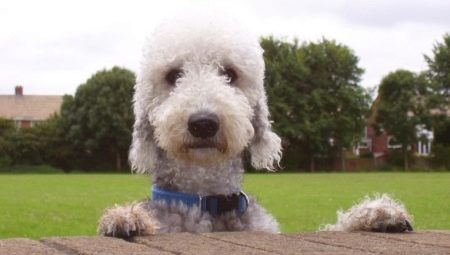
Graceful and cute Bedlington Terrier dogs can be a decoration of any home. On the street, such a dog, resembling a curly lamb in exterior, will definitely not leave those around you indifferent. But before you start this rather rare and expensive dog, it is important to familiarize yourself with the peculiarities of its character and content.
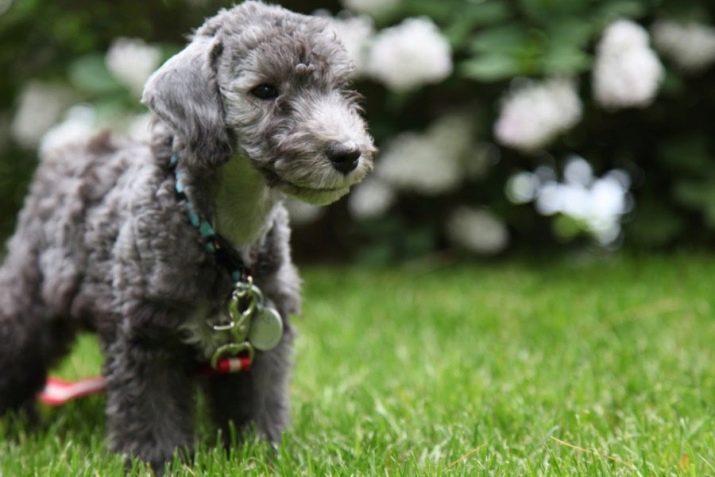
Origin story
The appearance of the first Bedlington Terriers dates back to the second half of the 18th century, and the town of Rothbury Forest in Northumberland is considered their homeland. At that moment, the breed was named so - the Rotbery Terrier. The first breeder is considered to be the gypsy hunter James Piper Allen. There is no information about which breeds are the ancestors of the Bedlingtons, but it is known that the gypsy managed to breed two varieties: the dandy dinmont terriers and the rotbery terriers.
The goal of the amateur breeder was to create the perfect hunting burrowing dog, but the result was such quick-witted and dexterous individuals that the gypsies began to use them for petty theft, including for catching neighboring poultry.
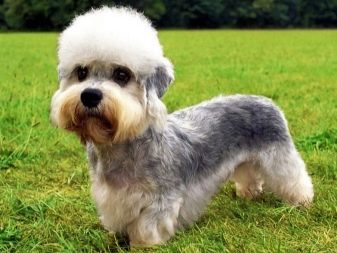

Further, a hunter from the nearby village of Bedlington, Joseph Ainsley, became interested in the new breed. In the 20s of the XIX century, he began to breed Rothbery terrier puppies and later these dogs were called Bedlington Terriers. In 1867 the breed standard was adopted, and in 1877 connoisseurs of these dogs founded the National Club of Breed Lovers. In 2010, the standard was last amended.
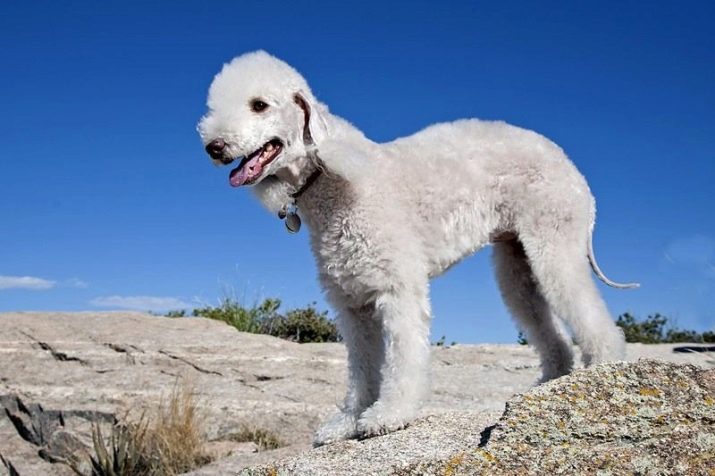
Description of the breed
The presented breed combines grace, refinement and at the same time plasticity and strength in its appearance. At the same time, despite the powerful body, there is no coarseness and massiveness in this dog. Usually males are up to 45 cm, females - up to 40.5 cm.Weight is in the range of 8.2-10.4 kg.
It can be assumed that the distant ancestors of the representatives of this breed were greyhounds, since the complexions of these two dogs are quite similar. For example, Bedlington has a similar elongated skull, an arched loin, a deep ribcage, and a tucked-in belly.
The head is pear-shaped or wedge-shaped, on the muzzle there is a gentle, soft expression.
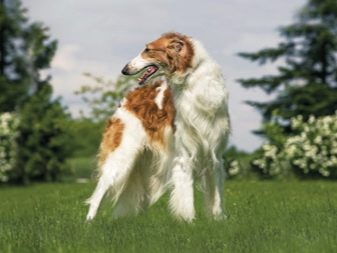

The eyes of a purebred individual are deep-set, triangular in shape. If the color of the coat is silver-black, then the eyes have a dark shade, in dogs with a silver color with tan, the eyes are slightly lighter, in brown dogs - light brown. The ears are triangular with rounded long-haired tips, set low, hanging down along the cheeks.
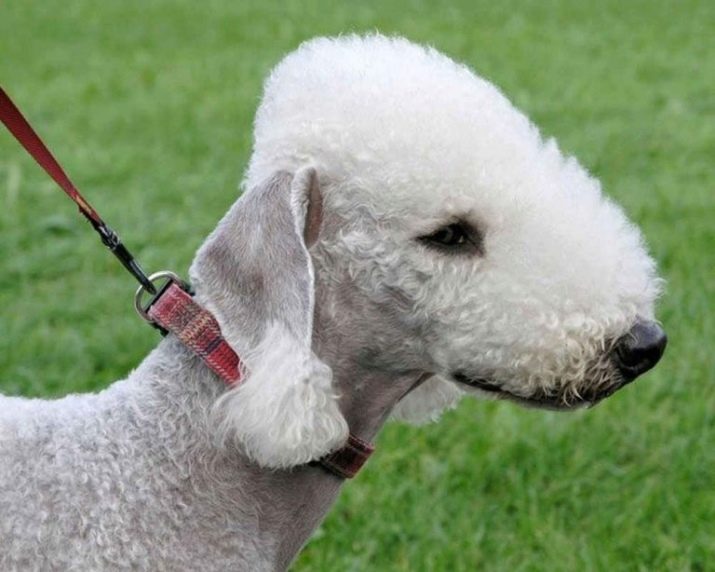
The tail is thickened at the base, of medium length, narrow and slightly curved at the end. Above on the back, the animal never holds it.
The structure of the wool in these individuals is very unusual: it is thick, does not adhere to the body, it is curly, especially the curls are pronounced on the head. The thicker the undercoat, the silkier and paler the coat.
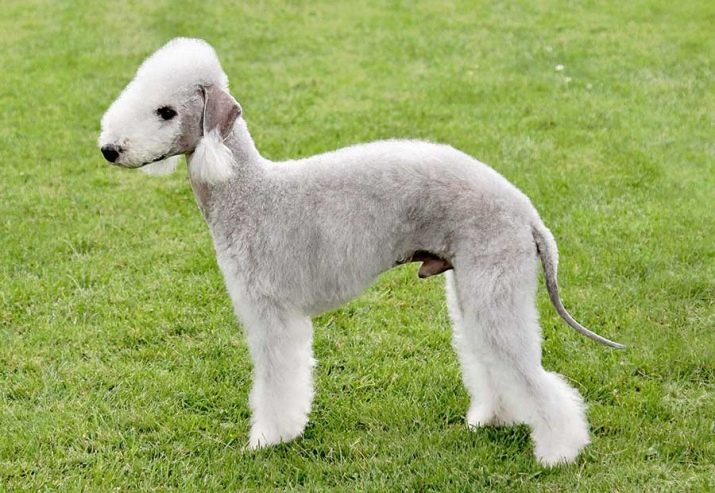
For purebred dogs such colors as blue, sand, blue and tan, brown, brown and tan. Animals with black-backed or speckled hair are not allowed to breed and participate in the exhibition, such individuals can only be used as companions.
The color of the dogs of the presented breed is also interesting because even experienced breeders can never say with certainty what color a grown puppy will be. The color of a dog changes in the first two years of life, and its specifics are influenced by the season, health, emotional background, pregnancy and childbirth. The born puppy always has a black or brown coat, which, as the dog grows, brightens and sometimes becomes almost snow-white with slight pigmentation.
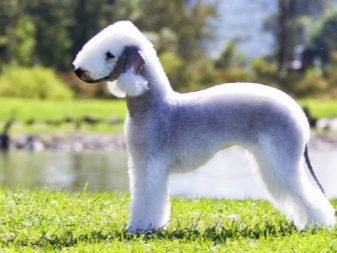

Character
These dogs have a very multifaceted nature, they combine English composure and intelligence, but at the same time they are fierce hunters. These are independent animals, they are good at thinking and easy to learn.
Often these seemingly cute creatures show a fighting disposition, which they tried to smooth out during the selection process, but the hunting blood still won, and the attempts of the breeders did not lead to anything. This self-will can manifest itself with an illiterate content and improper upbringing, therefore, in many respects, the character of this dog depends on the experience and patience of the owner himself.
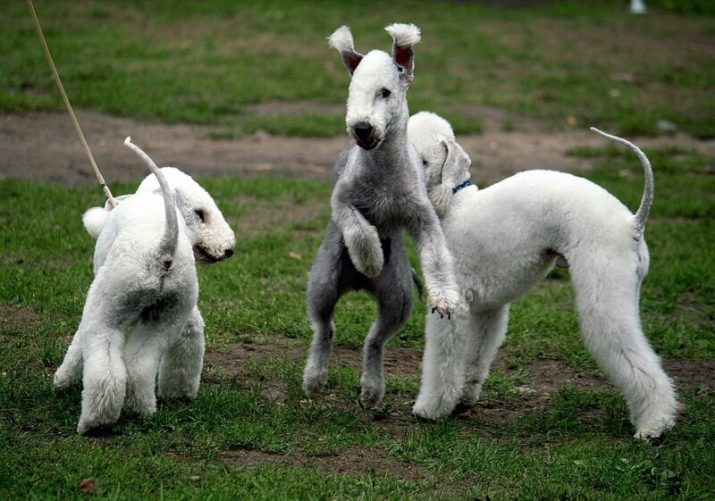
The average size of the dog does not prevent it from daringly rushing to a taller and more powerful opponent. This is often expressed when meeting with an enemy, which, in the opinion of the dog, is threatening its owner. This is a self-sufficient animal that knows its own worth. Courage, poise, quick-wittedness, loyalty - all these features characterize the Bedlington Terrier.
Among the positive characteristics, it is worth noting a patient attitude towards children, both young people and adolescents. Such a dog is suitable for a family with children, and if in childhood the dog will steadfastly endure all children's pranks, then as the little owner grows up, he will gradually become an active participant in all children's games. This dog will not tolerate a rude and obsessive attitude from an adult.
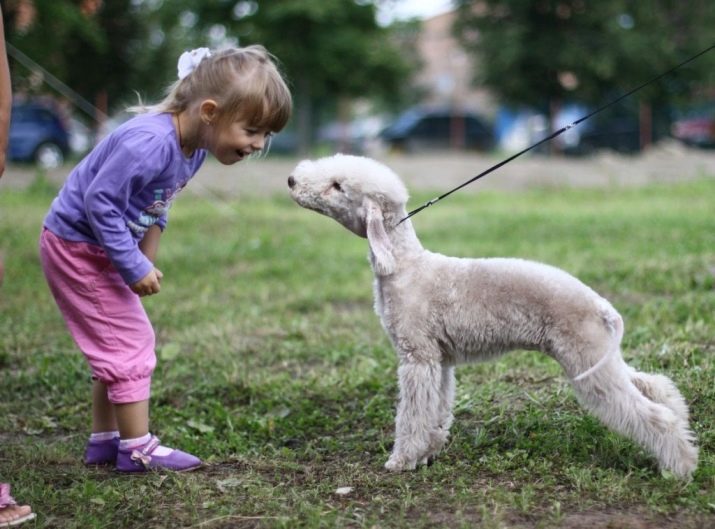
To strangers, these animals are patient, curious, but their insight and sensitivity often allow them to see the guest "through and through", so a person who, according to the dog, can harm the owner, the Bedlington will be distrustful and may show hostility. These dogs are also quite restrained towards other pets, but they always show themselves as leaders and can be jealous of the owner.
This dog is very loyal to its owner, but English roots do not allow him to be annoying, so the pet can just sit in a corner and watch his loved one from a distance.
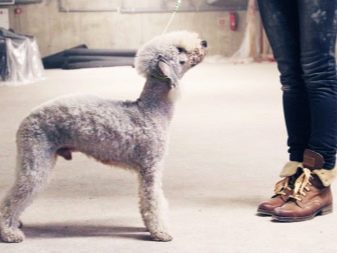

These dogs love to spend time in nature, which is again driven by the hunting instinct. Active games, swimming, digging holes, running after rodents and birds are Bedlington's favorite pastimes.
Despite the mobile lifestyle and the eternal desire to dig in the ground, these are rather clean animals. For example, chasing prey in rainy weather, the dog will always jump over puddles whenever possible. This neatness and tidiness is also manifested in the house, for example, representatives of this breed are rarely seen for damage to things in the absence of the owner.
Bedlingtons are funny, active, playful, can play with toys for a long time, they especially love balls, but this proud dog will not share his toys with other pets.
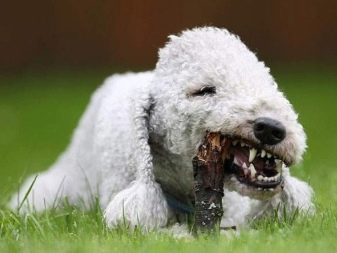

Maintenance and care
The most important criterion in keeping Bedlington is proper walking. This part is given special attention. The walk should be long and full, the dog should run freely, while these dogs rarely run away from the owner, who let them off the leash.
It is important to let the dog throw out its irrepressible energy during sports games, for example, agility, freestyle, coursing and frisbee are suitable. If the animal manages to completely use up its energy, then it is allowed to be kept even in small-sized housing.
It is recommended to change the place of walking often, as these dogs love new experiences. You can introduce them to new people and dogs, take them out into nature, take them out to noisy places.
The dog quickly socializes, and the frequent change of environment fosters confidence, courage, and decisiveness in it.

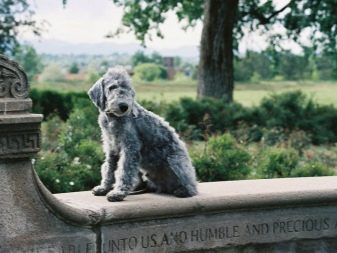
It is possible to lower the animal off the leash during a walk only in proven places, for example, in a country house outside the city or on a special dog playground. A dog released in the city can get involved in a fight with a dog he meets or start chasing urban rodents, which are often poisoned. These dogs feel more comfortable in cold weather than in hot weather.... It is allowed to take them with you on a morning jog, on a hike, or on a bike ride.
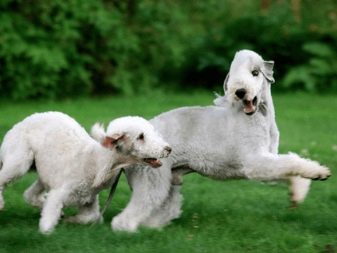
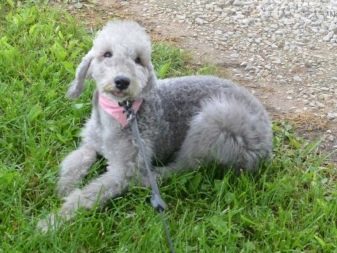
According to Bedlington owners, these animals do not shed. But this is not entirely true, just the hair of these dogs is almost invisible on the home carpet. Therefore, it is recommended to comb the dog a couple of times a week. Twice a summer, the pet needs a haircut; in winter, wool can be cut less often.
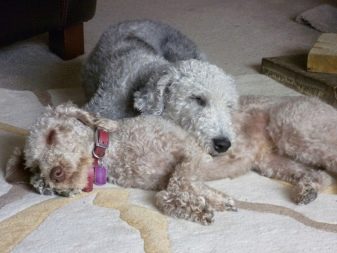
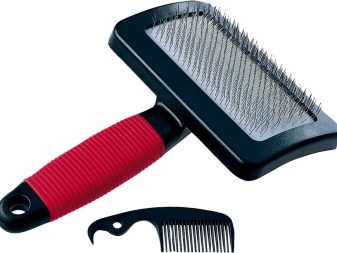
If Bedlington is an exhibitor, then it is important to trust a haircut only to a professional groomer. This procedure is performed differently for each area of the body. So, for an exhibition specimen, the hair length should not exceed 2.5 cm, while the maximum length of hairs can be on the head and body.
When cutting the muzzle, the hair in the area of the ears is also trimmed, the groomer leaves brushes in the form of rhombuses at the tips, and the tail is made smooth. In this case, for each individual, the type of haircut is selected individually, taking into account not only the structure of the body, but even the sex and age of the animal.
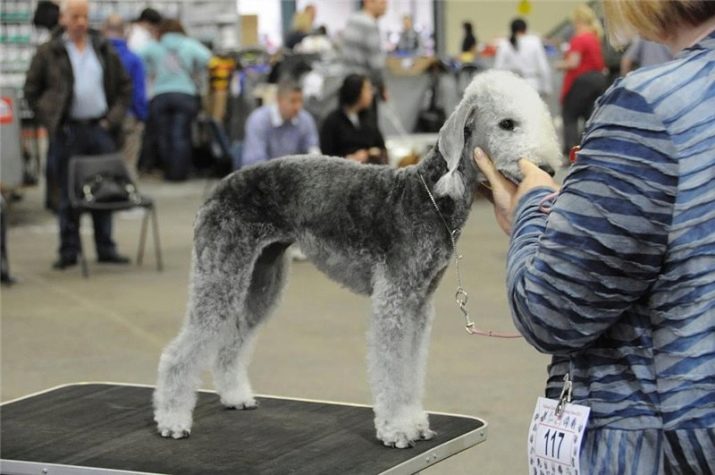
In the summer, for representatives of this breed, the shortest haircut is usually performed. Bedlingtons do not like heat and will feel more comfortable in a loose coat. If the animal does not take part in the exhibition, then you can completely abandon the haircut, however, a specific wool will become an eternal carrier of street debris, snowballs, over time it falls off, it will look very sloppy and can become a source of skin problems.

Representatives of this breed do not need regular bathing, it is enough to carry out bath procedures 3-4 times a year or before the exhibition. Every month, the pet's claws are trimmed and the hair between the toes and pads is removed. If the hairs are not removed, pebbles, chewing gum will get stuck in this area during walking, and tangles will form.
The owner must pay special attention to the health of the dog.In general, these animals are in good health, but, like most purebred individuals, they are prone to some hereditary and genetic diseases. The following ailments are considered the most common.
Copper toxicosis. With this disease, copper accumulates in the body. In recent years, DNA research has made it possible to cull sick individuals and carriers and avoid unhealthy offspring.
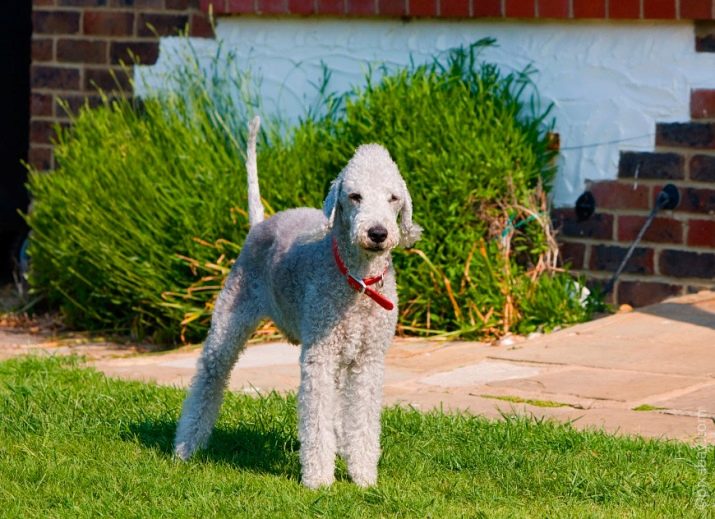
Dislocation of the patella. It can be both congenital and acquired. Sometimes it may not be accompanied by symptoms, but more often it is diagnosed when examining the causes of canine lameness. In especially severe stages, it is possible to carry out a surgical operation.
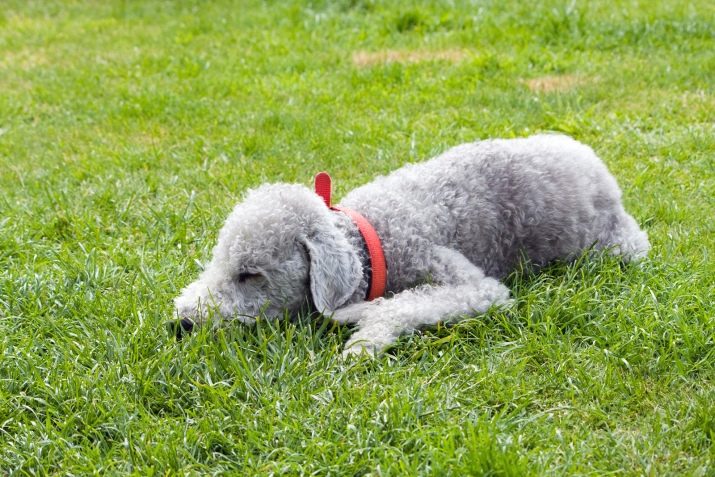
Renal hypoplasia. Represents an abnormal development of the kidneys. In this case, the animal constantly feels thirst and, as a result, often urinates. This is how renal failure manifests itself.

Retinal dysplasia. Congenital defect. Diagnosed at the age of 7-12 weeks. It does not particularly affect the quality of life of the dog and rarely leads to loss of vision, however, sick individuals are eliminated during breeding.
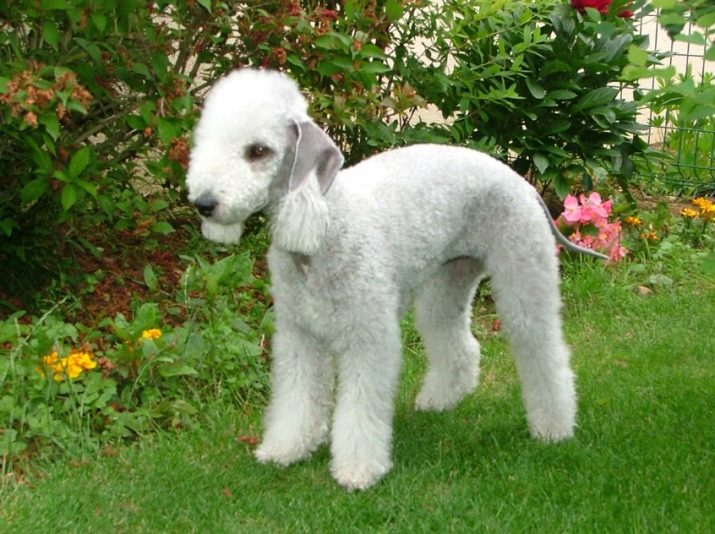
To avoid other dangerous diseases, viruses and infections, the owner must vaccinate the dog every year and treat it against parasites.... It is also important to choose a healthy puppy initially. When buying a four-legged friend, carefully study all the information and reviews about the breeder and carefully read the list of documents provided.
What to feed?
As already noted, copper toxicosis often affects dogs of this breed, so it is important to be careful with pet feeding. Dry cooked food is generally recommended for purebred dogs, but Bedlingtons are an exception. In this case, it is better to give preference to natural food.
The basis of the diet should be beef, chicken, offal; it is permissible to give sea fish a couple of times a week. Do not forget about carbohydrates, for example, rice, millet, buckwheat, red vegetables will be useful for the dog's body.
A small amount of fermented milk products will not harm either.


Sausages, sweets, potatoes, food from the table should be excluded from the menu. An adult animal needs two meals a day without snacks. Knowing the ability of the organism of representatives of this breed to accumulate copper, it is important to get tested regularly to make sure that the proposed type of feeding is suitable for a particular dog.
If the owner still prefers ready-made dry food, then it must certainly be a premium or super-premium product. In this case, the owner must necessarily consult with a veterinarian.

How to educate?
Raising a puppy should start from early childhood. Despite the intelligence, quick wit and high intelligence, training these dogs is not so easy, because, in addition, they are stubborn, and sometimes show aggressiveness.
If there are cats or other pets in the house, then the puppy should be introduced to the four-legged neighbor from the first days of his appearance in the new family. Then the dog will not perceive the other animal as prey or rival.
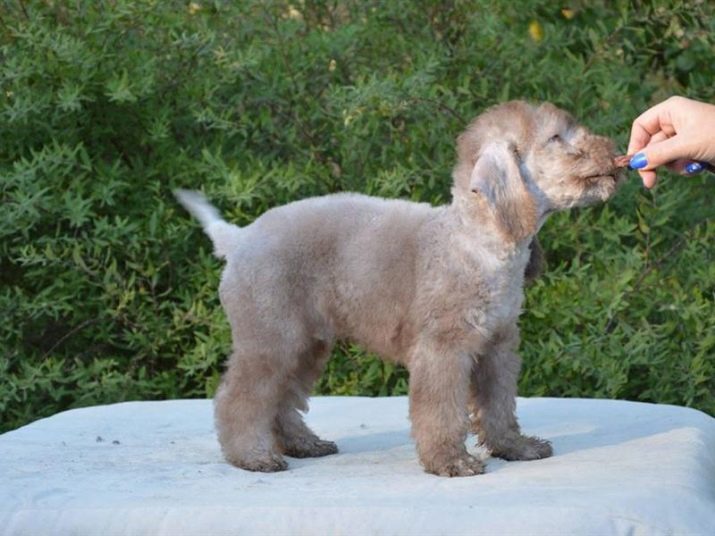
During training, the owner should not show slack, but in no case should he be rude or cruel. Seeing that the owner is angry, the dog will be very worried about this, and his upset face will melt the owner's heart. But this is precisely the big mistake of the owner.
Noticing the weak point of a loved one, the dog will take advantage of this and eventually turn into an uncontrollable animal. Therefore, during classes, the owner should be firm, consistent, but not rude or soft.
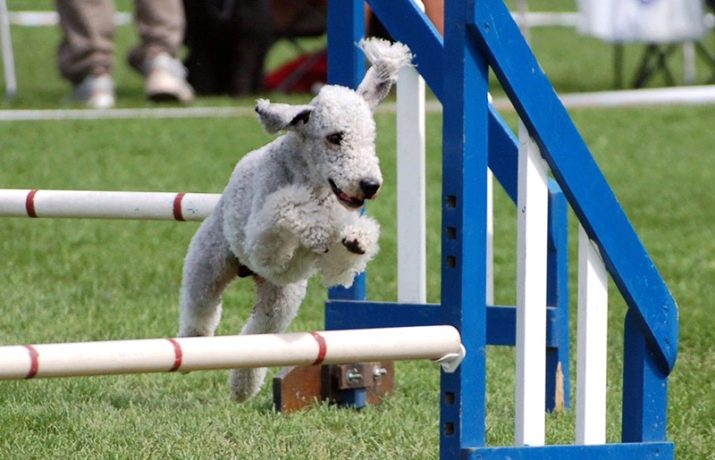
When raising a puppy, you need to stock up on treats. Also, these dogs, which quickly become attached to the owner, respond well to affection. These techniques will be needed, for example, when teaching a new family member to a diaper.
If a puppy is brought up in a private house, then from childhood it is worth weaning him from the habit of digging holes in the area. Also at a young age, puppies love to bark loudly, which often becomes a cause of discontent among the owners and their neighbors. It is also important to wean the dog cub from this manner from childhood. Help in this situation can be special toysthat need to be left to the new pet in the absence of the owner.

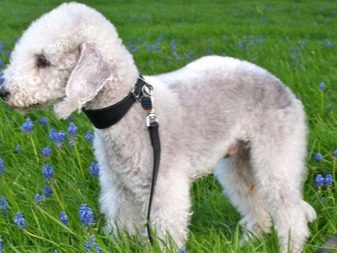
A puppy brought into the house should immediately learn that the owner here is a man. Basic command training starts at 2–3 months of age. You can train your dog in a playful way. The first lessons take a couple of minutes, gradually the time of the lessons increases.
In order for a hunting dog kept in an apartment to fully expend its energy, you can offer it some kind of sport. For example, bedlingtons are often used in agility. During this game, the animal fully realizes its hunting skills and therefore learns this sport easily.
True, a dog participating in agility often causes problems during an ordinary walk: in every cat, mouse or bird, he sees an object of hunting.
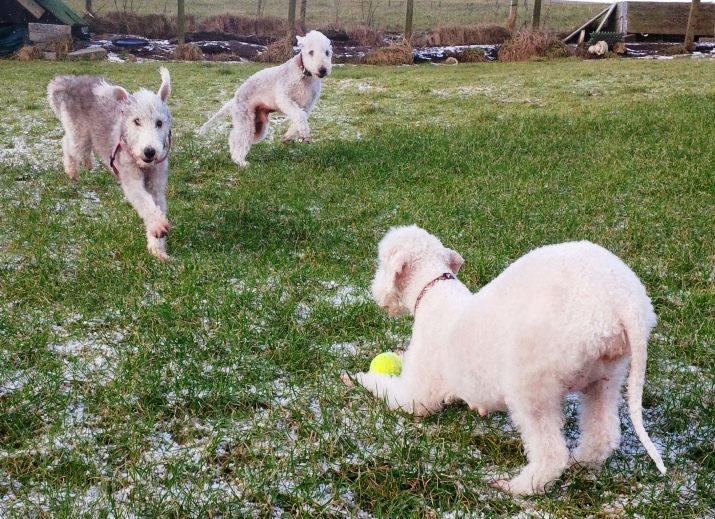
The following video will tell you about the Bedlington Terrier breed.






































